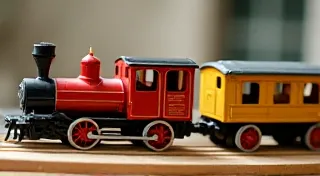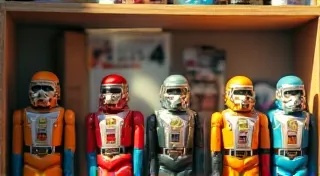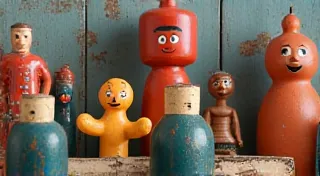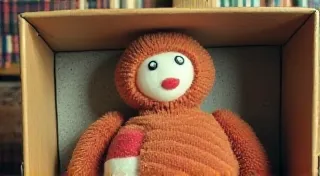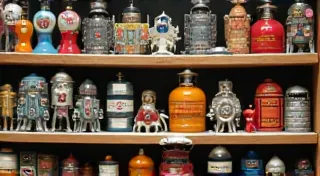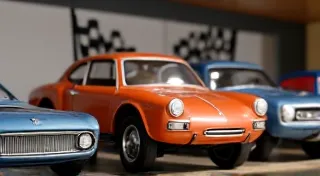The History of Marx Toys: A Look Back
For generations of children, the name “Marx Toys” conjured up images of sturdy, imaginative playthings. From cowboys and Indians to trains and battery-operated vehicles, Marx Toys became synonymous with affordable fun and sparked countless hours of playtime. This article will explore the rich history of this influential toy manufacturer, examining its rise, its product range, and its lasting impact on the world of vintage toys and collecting.
The Early Years: From Pennant to Marx
The story begins not with toys, but with sewing. In 1902, William Marx, a German immigrant, started a small sewing company called Pennant Novelty Company in Erie, Pennsylvania. The company initially produced novelty sewing patterns and later expanded to making plush animals and felt toys. His brother David joined him shortly after, and the company was renamed Marx & Company in 1907. Recognizing the potential in the burgeoning toy market, William and David began to focus exclusively on toy production.
The company's early toys were largely simple, hand-crafted items. They capitalized on the popularity of the burgeoning department stores and mail-order catalogs, steadily gaining a foothold in the market. The brothers proved to be astute businessmen, understanding the importance of affordability and appealing to a broad audience. This foundational strategy would remain a cornerstone of Marx Toys’ success for decades.
The name officially changed to Marx Toys in 1916, marking a clear shift in focus and ambition.
The Rise of Mass Production and Iconic Toys
The 1920s and 1930s witnessed a significant turning point for Marx Toys. Embracing the innovations of the industrial age, the company began to utilize mass production techniques. This allowed them to dramatically increase output and lower prices, making their toys accessible to an even wider range of families. The introduction of pressed steel construction for many of their toys was a key innovation, making them more durable and affordable than earlier, tinplate models.
During this era, Marx Toys introduced many of the product lines that would become iconic. Their line of Western-themed toys, including cowboys, Indians, horses, and stagecoaches, were incredibly popular, reflecting the romanticized image of the American West prevalent in popular culture. The “Lone Scout” series, with its distinctive felt-covered figures and horses, became a staple for many children.
The company also began experimenting with battery-operated toys, which quickly became a huge draw. Marx’s battery-operated cars, trucks, and airplanes were marvels of engineering for the time, bringing motion and sound to playtime.
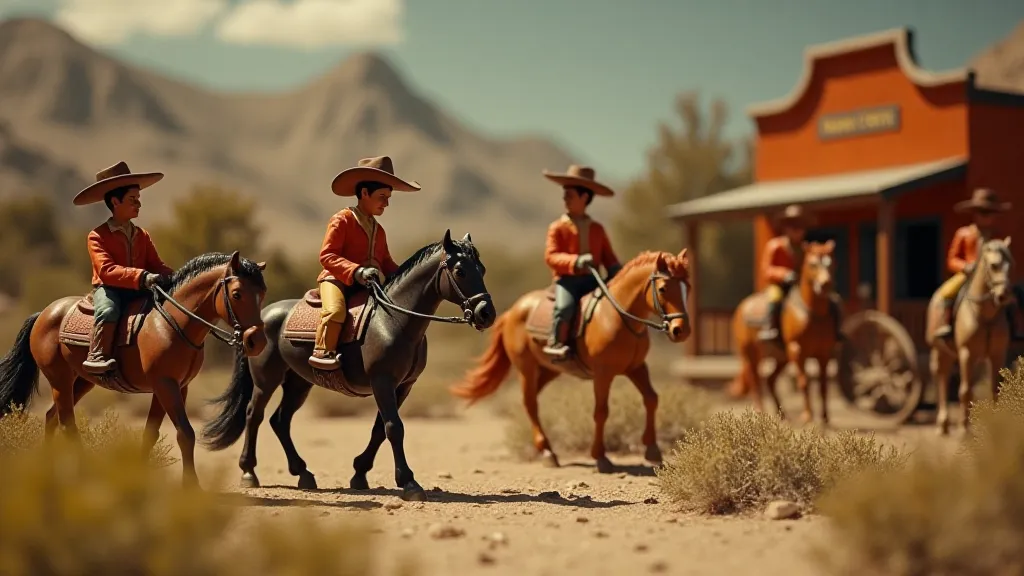
Post-War Boom and Expanding Horizons
The post-World War II era was a golden age for Marx Toys. The economic boom and increased disposable income fueled demand for toys. Marx capitalized on this by expanding their product lines further. They introduced a massive range of toys including:
- Trains: Marx trains, known for their affordability and simplicity, became immensely popular. They offered a complete train system including locomotives, cars, track, and accessories.
- Play Sets: Their expansive play sets, covering themes like circuses, farms, and construction sites, provided immersive play experiences for children.
- Vehicles: From fire trucks to police cars to monster trucks, Marx produced a vast array of battery-operated and friction-powered vehicles.
- Dolls and Figures: While not known for high-end dolls, Marx produced a respectable line of character dolls and action figures.
The company also secured licenses to produce toys based on popular television shows and movies, further expanding their reach. Think of the toys based on "The Lone Ranger", "The Mickey Mouse Club", and numerous others!
Marx's innovative approach wasn't limited to product diversification. They pioneered new manufacturing techniques that further reduced costs and increased production volume. This relentless focus on affordability solidified their position as a dominant force in the toy industry.
The Decline and Legacy
The 1970s and 1980s brought challenges for Marx Toys. Increased competition from overseas manufacturers, rising production costs, and changing consumer preferences began to erode their market share. While they attempted to adapt, their inability to compete on price and quality ultimately led to their downfall.
In 2000, the remaining assets of Marx Toys were sold to several companies, marking the end of an era. While the company itself ceased to exist, its legacy lives on.
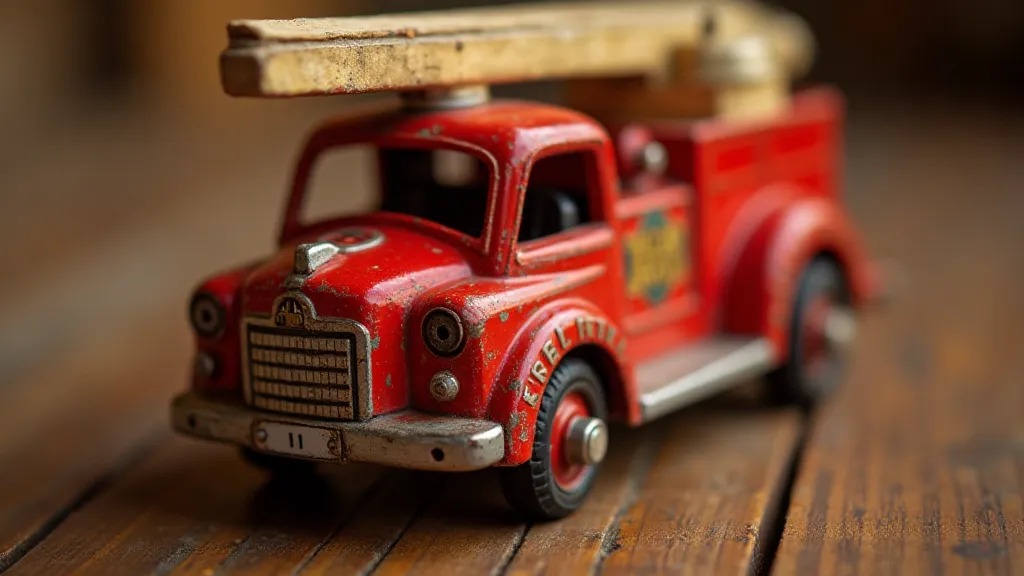
Collecting Marx Toys: A Nostalgic Pursuit
Today, Marx Toys are highly sought after by collectors. Their affordability during their original production run means that many survived, though condition varies greatly. Some of the most desirable Marx Toys include:
- Lone Scout Figures: Early versions with felt coverings are particularly valuable.
- Battery-Operated Vehicles: Working models in good condition are prized possessions.
- Rare Licensed Toys: Toys based on obscure or short-lived television shows can command high prices.
- Train Sets: Complete, original train sets are increasingly rare.
Collecting Marx Toys offers a unique opportunity to reconnect with a simpler time and appreciate the ingenuity and craftsmanship of a bygone era. The toys evoke powerful feelings of nostalgia, reminding collectors of their childhoods and the joy of imaginative play. Their robust construction and recognizable designs make them enduring symbols of American toy history.
The appeal of Marx Toys extends beyond nostalgia. They represent a fascinating chapter in manufacturing history, a testament to the power of mass production and the enduring allure of affordable fun.
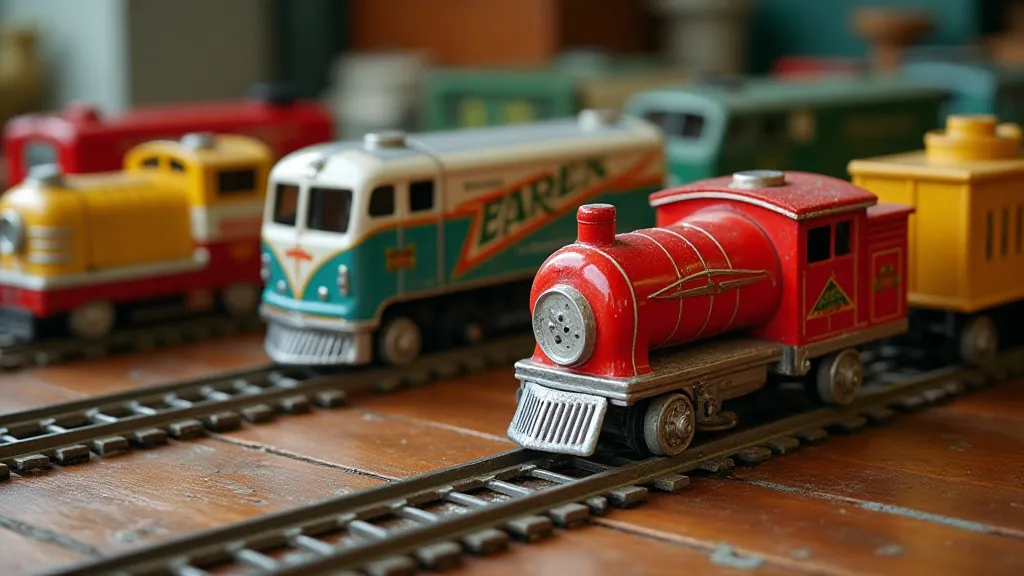
Conclusion
The story of Marx Toys is a compelling narrative of innovation, ambition, and the changing landscape of the toy industry. From humble beginnings as a sewing company to becoming a household name synonymous with affordable fun, Marx Toys left an indelible mark on generations of children. Though the company is no more, its legacy continues to inspire collectors and remind us of the simple joys of playtime.
